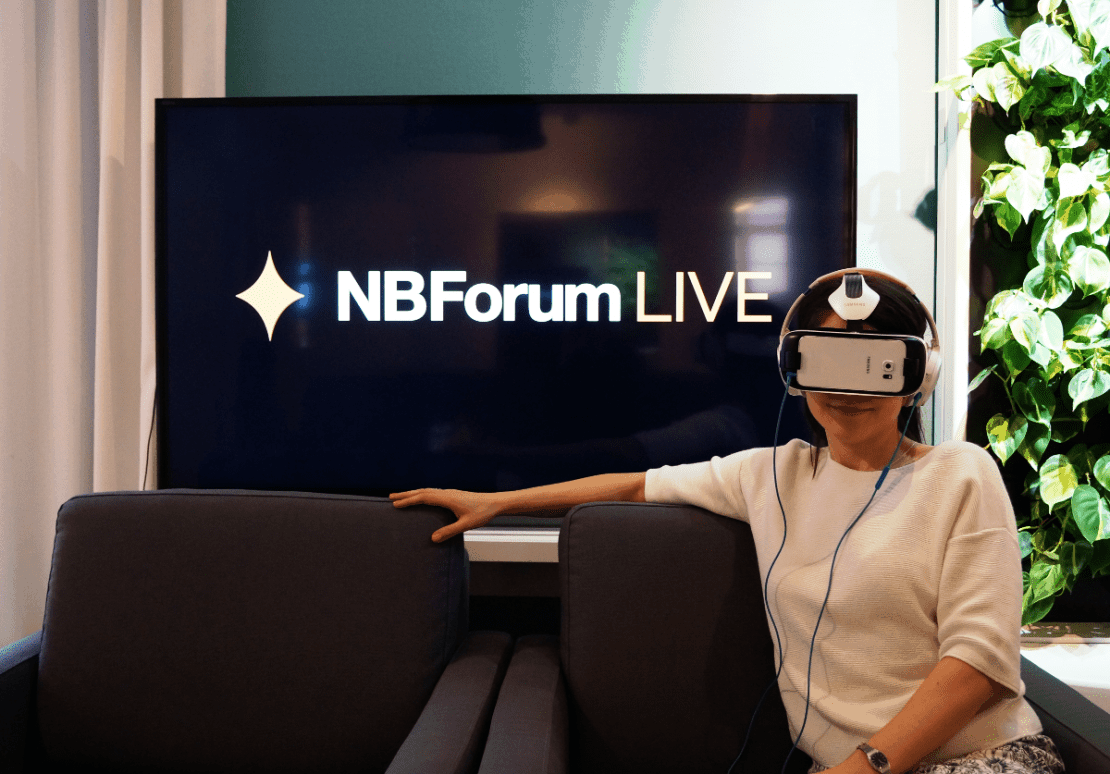3Oct2016
As we transition from search to discovery, there are many platforms out there where people discover things they didn’t necessarily know they wanted. These places are predicted to become a big growth area. Yaron Galai, CEO of the content discovery network company Outbrain and Mario Vasilescu, CEO of knowledge curation platform Rewordly, share their insights about the impact that content discovery has on users, marketers and everything in between.
Content Discovery as a Marketing Tool
Galai first explored the space of contextual advertising with Quigo, his first company. Even though business was working well around advertising, in general, he felt frustrated as a consumer with ads that weren’t valuable to him. With Outbrain, he wanted to start something where he would find value in the content recommendations and come back to them over and over.
“I don’t view Outbrain as being in the ads space per se. I view it as being in content discovery and that’s my passion. I’m trying to make a great content recommendation for myself. I love reading, I love consuming content. It’s just frustrating not to find the most valuable piece of content, so that’s what I’m trying to build with Outbrain,” Galai explains.
Vasilescu believes that content marketing is harder to produce and deliver without content discovery. “When we talk about content discovery,” he says, “there is the internal side – tools to discover the content we should be sharing or building on – and the external side – tools and platforms to get content in front of the right people, at the right time. Content is the difference between a quiet room and a room full of conversation and personality, and content discovery is how we start and steer the conversations.”
According to the CMI’s 2016 B2B Content Marketing Benchmarks, Budgets, and Trends— North America report, content discovery tools are, at 45%, the third most effective paid method for distributing and promoting content, right after SEM (55%) and promoted posts (48%), and way ahead native advertising, offline promotion and traditional online banner ads. Not only that, but content discovery tools also recorded the largest effectiveness rating increase of 9 percentage points from last year.
The Importance of Relevancy in Content Discovery vs. Search
“Relevancy is counterintuitive in content discovery,” remarks Galai. ”Relevancy is the most important thing in search and that’s why, in anything that Google does, relevancy is the most important thing.”
Content discovery is much more similar to reading a newspaper. When reading a newspaper, the reader doesn’t expect that the next story will be contextually relevant to a previously read story.
Galai explains: “The algorithms at Outbrain focus a lot on interesting-ness. How do we figure out what’s going to be interesting? And that’s sometimes non-relevant. It’s about different topics, just like a newspaper would be. We put a lot of effort on the technology side, and then we focus on what goes into the index, what content is available for us for recommendations.”
Outbrain developed over 50 different algorithms trying to look at what is interesting for the user.
“Content marketing and content discovery are forms of creating more value for the user, having people come back to the content over and over, even though there might be a marketer that’s paying for some of that content,” adds Galai.
When it comes to value, Vasilescu highlights four key steps in which content discovery plays a critical role: creating (adding value), optimizing for discovery (making sure people find your value), optimizing for engagement (making sure your value is relevant), and curating (adding value by guiding your audience to more value).
If these bases are covered, with quality and helpfulness as guiding principles, consistent and respectable awareness can be easily achieved: “That’s a big ‘if’, though,” he adds, “and that’s why the content creation, optimization, discovery, and curation landscapes are so crowded! There are a lot of pain points and a lot of opportunities.”
What Factors Help Maintain a Healthy Growth of the Global Ad Market
With publisher partners like CNN, Fox News, and Washington Post, in the US, and Le Monde, L’ Equipe and The Guardian in Europe, Outbrain can provide long-term sustainable value to the user. Publishers can use such platforms in many different ways, but they need to figure out what to focus on more: short term revenue or long-term engagement and user value.
“Content recommendation should be absolutely on brand for publishers, with monetization being a secondary result – kind of a good outcome, but not the thing to focus on,” points out Galai.
He also adds that “we’re in a shift, especially online, between interruptive advertising, which is how advertising used to be, into value-driven advertising.”
“A great example of that was the search advertising in Google, where the ads are a critical part of the search experience. Search engine is worse off if it doesn’t have the ads. That value creation through advertising by providing value – and I think content marketing is a big piece of it – it’s how future growth of online advertising is going to happen. So you’ll continue seeing ad dollars moved from interruption to value creation for the user,” says Galai.
How Rewordly Contributes to Content Discovery
Rewordly, the Canadian tech startup, was built on the idea of helping people make the most of the time they spend online reading and writing. They provide a knowledge curation suite for professional teams, and knowledge branding through their upcoming Knowldgr network.
Vasilescu, who co-founded Rewordly with his brother Matei, a self-taught web developer, sees the dual purpose of content discovery tools as saving time and guiding users to helpful or interesting related content.
He says: “What we are obsessed with in building Rewordly, and now Knowldgr, is those elements of time and quality. How quickly can you produce quality content using content discovery? How can you reward users for their time spent on meaningful content to get them to enjoy and trust your suggestions?”
Addressing the aspect of content creators’ lack of time, and consumers being over-supplied means earning trust, which is the lifeblood of any lasting commitment. “What we have realized – perhaps not surprisingly – is that your colleagues and close friends are still one of the best filters for trust, but the challenge is making it fast and specific,” says Vasilescu.
He then breaks down the core of Rewordly: “We address the internal aspect of content discovery (content discovery for curating and sharing) by letting the people you respect the most recommend extremely easily and quickly the exact pieces of content you should be looking at, and easily add their ‘why’.“
This is instead of the typical course of having an entire article suggested, when both the person sharing, and the person receiving, are only interested in a specific piece of it, and are sharing because of a specific context. When those subjective filters are removed, time is wasted and trust (impression of quality) is lost.
“By replacing the more time-consuming aspects associated with content discovery, especially appraisal and filtering, we can concentrate the impression of quality (trust) versus time spent,” he adds.
“With Knowldgr, we are applying similar ideas to the external side of content discovery. By rewarding readers for their time, and matching this with their professional profiles, we are creating data-driven profiles that represent very specific subject matter interests and specializations. In this way, we are again empowering a more trusted, efficient, people-powered form of content discovery,” clarifies Vasilescu.
Where Content Discovery Will Happen in the Future
Traditionally, content discovery happened on publisher sites like CNN or ESPN. In recent years, active discovery versus consumption is starting to break into two places: people discover content on social networks in their news feeds; going forward, the area of chat and messaging is a frontier where people will discover content that also includes notifications on their phones.
Outbrain recently announced a partnership with Facebook and CNN to power content discovery within Facebook Messenger. “We have a lot of plans on where we go on messaging and chat. I think a lot of content discovery and content marketing is going to happen there,” Galai reveals.
How to Better Measure the Value of Our Content
Most publishers don’t completely know what the value of an article or a video is in real time. One of the issues that creates is that audience development, acquiring an audience from the bigger internet into a publisher, can only be done as a cost center or a loss center.
“What Revee acquisition allows us to do, with a product called Automatic Yield, is it allows publishers to attract a new audience and do it in an ROI positive way, because we know what article is going to be financially valuable for the publisher,” says Galai.
Vasilescu goes back to the time factor, which comes in short supply: “How we choose to spend our time is a great indicator of perceived value. The problem is that today’s content caters to a broken system, and thus usually labels that perceived value with extremely simplistic metrics, whether they be clicks, aggregate time on page, or reaching the bottom of a page.”
These metrics are easily gamed. By adding not only more, but more nuanced metrics, to how time spent on a page is measured, the impact of content can be better understood. “That all said, it is one thing to apply such analyses, and another for the industry to adopt it when the status quo is flawed but comfortable,” says Vasilescu.
After all, actions, like shares and inbound traffic measurement, don’t make the difference. True engagement does.
“A perfect example is Twitter: the vast majority of content on Twitter has not necessarily been read by the person sharing, but instead eye-balled and pushed out (or, more likely, done so by a bot). Shares are fleeting and superficial, while engaged reads or views are lasting and impactful, driving the kind of awareness and respect that defines real value,” Vasilescu concludes.


